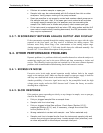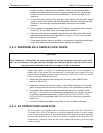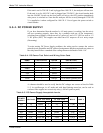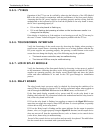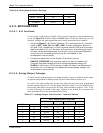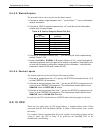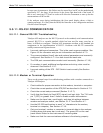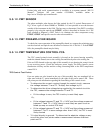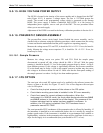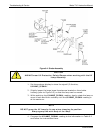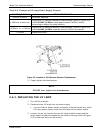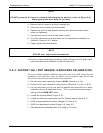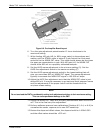
Troubleshooting & Service Model T101 Instruction Manual
232
Further help with serial communications is available in a separate manual “RS-232
Manual”, Teledyne API part number 013500000, available online at
http://www.Teledyne-api.com/manuals/.
9.5.12. PMT SENSOR
The photo multiplier tube detects the light emitted by the UV excited fluorescence of
H
2
S. It has a gain of about 500000 to 1000000. It is not possible to test the detector
outside of the instrument in the field. The best way to determine if the PMT is working
properly is by using the optical test (OTEST), which is described in Section 4.6.4. The
basic method
to diagnose a PMT fault is to eliminate the other components using
ETEST, OTEST and specific tests for other sub-assemblies.
9.5.13. PMT PREAMPLIFIER BOARD
To check the correct operation of the preamplifier board, we suggest the technician carry
out the electrical and optical tests described in Sections 4.6.4. and 4.6.5. If the ETEST
fails, the preamp
lifier board may be faulty.
9.5.14. PMT TEMPERATURE CONTROL PCA
The TEC control printed circuit assembly is located on the sensor housing assembly,
under the slanted shroud, next to the cooling fins and directly above the cooling fan.
If the red LED located on the top edge of this assembly is not glowing the control circuit
is not receiving power. Check the analyzers power supply, the Relay board’s power
distribution circuitry and the and the wiring connecting them to the PMT temperature
control PCA.
TEC Control Test Points
Four test points are also located at the top of this assembly they are numbered left to
right start with the T1 point immediately to the right of the power status LED. These
test points provide information regarding the functioning of the control circuit.
To determine the current running through the control circuit, measure
the voltage between T1 and T2. Multiply that voltage by 10.
To determine the drive voltage being supplied by the control circuit to
the TEC, measure the voltage between T2 and T3.
If this voltage is zero, the TEC circuitry is most likely open.
Or,
If the voltage between T2 and T3 = 0 VDC and the voltage measured
between T1 and T2 = 0 VDC there is most likely an open circuit or
failed op amp on control PCA itself
If the voltage between T2 and T3 = 0 VDC and the voltage measured
between T1 to T2 is some voltage other than 0 VDC, the TEC is most
likely shorted
T4 is tied directly to ground. To determine the absolute voltage on any
one of the other test points make a measurement between that test
point and T4.
07266B DCN6485



